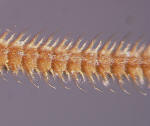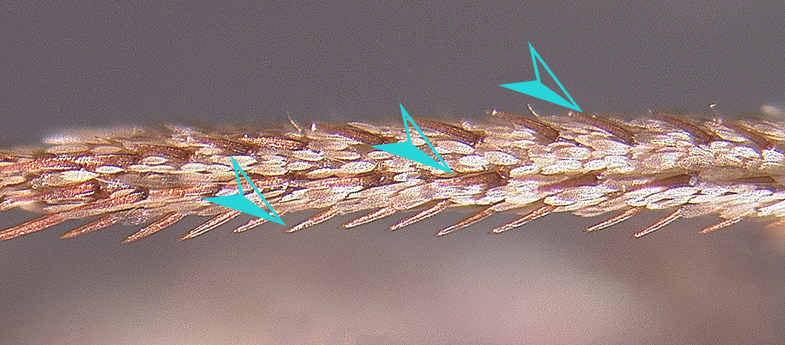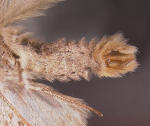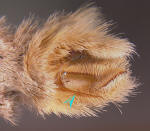|
Identification key to the Noctuinae
occurring in the Dakotas
Below are four possibilities: A, B, C and
D. Compare your moth to each successive choice. These choices are
not always mutually exclusive, proceed to 'B' only if your
specimen does not fit 'A', likewise for B, C, and D. Also see note
at bottom of page.
|
A. Orbicular spot V-shaped, male antennae doubly bifasciculate.



|
|
B. Basi-metatarsus with only three rows of setae.


If metatarsus has setae confined to basal
half or
six or fewer setae constituting a
fourth row, choose this alternative.
|
|
|
|
|
C. Male valve with
sacculus extension.


May be necessary to carefully remove scales with a
paintbrush. Sacculus
extension can be shorter, more
massive, or spatulate and upturned.
|
|
D. Not exactly fitting
other choices.






|
Most
Return to beginning of key
Return to
introduction
Return to Family Noctuiidae
|
